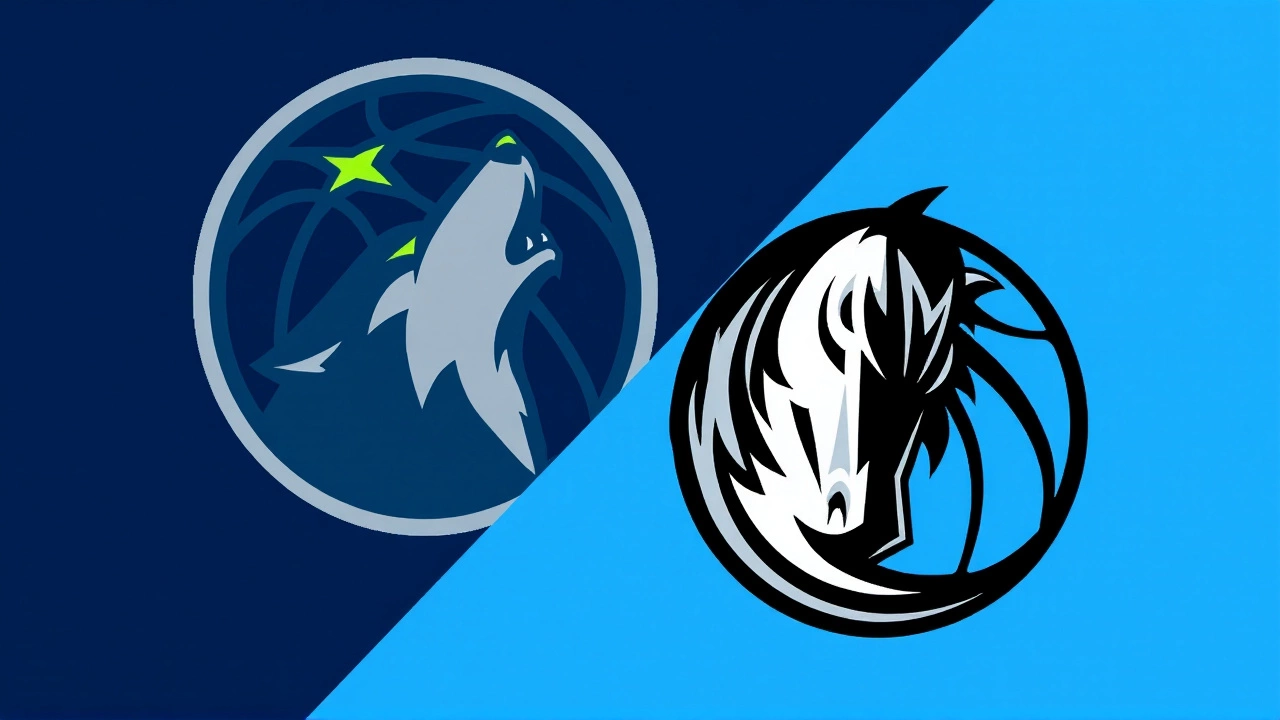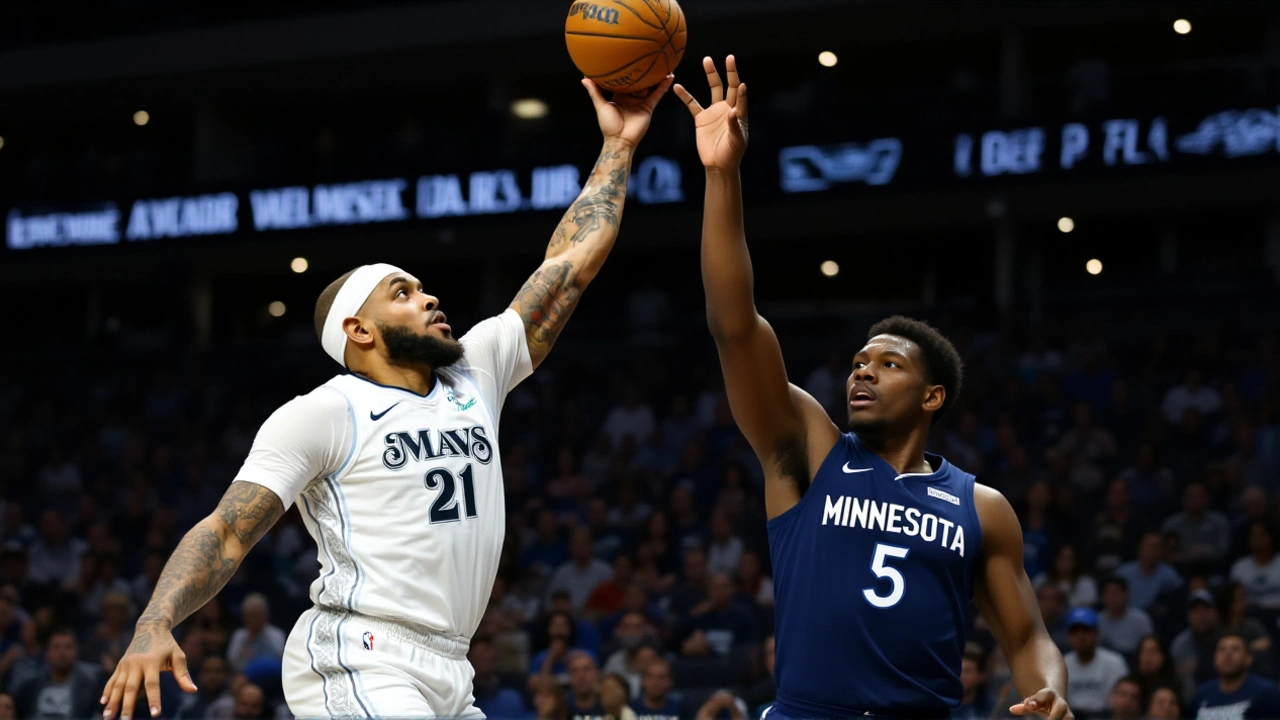On Christmas Day 2024, the Dallas Mavericks watched their playoff hopes dim in a gut-wrenching 105-99 loss to the Minnesota Timberwolves—all because of a single, devastating injury. Just minutes into the game, Luka Doncic, the 6-foot-7 Slovenian maestro and engine of Dallas’s offense, grabbed his right calf and collapsed to the floor. He didn’t return. And the Mavericks never recovered.
Christmas Day Collapse
It was supposed to be a showcase. The NBA’s Christmas Day slate always delivers drama, and this matchup between two Western Conference rivals had all the makings of a classic. But the game turned on a moment no one saw coming. Doncic, averaging 33.9 points, 9.2 rebounds, and 9.8 assists in the 2023-2024 season, was sidelined early with a calf strain. Without him, the Mavericks’ offense—once a precision machine—became a series of isolated attempts. Kyrie Irving, wearing #11, poured in 36 points. P.J. Washington Jr. added a season-high 30. But it wasn’t enough. The Timberwolves, disciplined and opportunistic, held on despite a late Dallas surge.Turns out, the Wolves pulled off something even rarer than just winning on Christmas. According to Dunking with Wolves, they achieved an "extremely rare feat"—though the exact nature remains unconfirmed. Some speculate it was the first time since 2010 that Minnesota won a Christmas game without their All-Star center Karl-Anthony Towns. Others point to their defensive efficiency: they held Dallas to just 39% shooting after Doncic exited. Either way, the win wasn’t just a holiday upset—it was a statement.
The Doncic Void
The numbers don’t lie. In the 15 games following Doncic’s injury, the Mavericks went 4-11. That’s not a slump. That’s a collapse. Without their All-NBA First Team guard, Dallas lost their identity. Their offensive rating dropped by 12.3 points per 100 possessions. Their assist-to-turnover ratio, once among the league’s best, plummeted to 1.7:1—well below the NBA average. Fans noticed. Coaches admitted it. Even Cynt Marshall, the Mavericks’ CEO since 2018, acknowledged the toll in a rare public statement: "Luka isn’t just our best player. He’s the reason we play the way we do. When he’s out, we’re playing in reverse."It’s not just about scoring. Doncic creates for others. He draws double-teams. He makes the impossible look routine. His absence didn’t just hurt the offense—it exposed the team’s lack of depth. Bench players like Dereck Lively II and Christian Wood were asked to do too much. The defense, once resilient, became predictable. And the pressure mounted.

Timberwolves Rise
Meanwhile, the Timberwolves—led by coach Chris Finch and owned by Alex Rodriguez and Marc Lore—were building something quietly. Their victory on Christmas wasn’t an anomaly. It was the culmination of a season-long evolution. They’d already beaten Dallas 120-96 on November 17, 2024. Then came the 115-114 nail-biter on January 22, 2025. Three wins in four meetings. That’s dominance.Anthony Edwards, the 22-year-old phenom, averaged 28.7 points against Dallas in those four games. Jaden McDaniels locked down wings. Rudy Gobert controlled the paint. And their bench, once a liability, became a weapon. The Wolves didn’t just win—they proved they could win without relying on one superstar. That’s the difference between a contender and a pretender.
What’s Next for Dallas?
Doncic’s return timeline remains unclear. As of January 22, 2025, he was still sidelined, with no official date set. The Mavericks have a brutal schedule ahead: five games in eight days, including back-to-backs against Denver and Phoenix. Without him, their playoff chances are slipping. They’re currently 10th in the Western Conference, just one game ahead of the Portland Trail Blazers.Front office insiders say Dallas is considering a trade to add defensive depth—possibly targeting a veteran wing to take pressure off Irving. But with Doncic’s contract extending through 2027, and his market value sky-high, any move would be risky. The team’s medical staff is being extra cautious. Calf strains can linger. They can turn into recurring issues. And for a player who’s already battled ankle and knee problems, the stakes are enormous.

Why This Matters Beyond Dallas
This isn’t just about one team’s season. It’s a reminder of how fragile NBA success can be. The Mavericks were 12-5 before Doncic’s injury. Now? They’re fighting for survival. Meanwhile, the Timberwolves, once considered a team with potential but no ceiling, are now viewed as legitimate Western Conference threats. The league’s balance is shifting.And for fans? It’s painful. Christmas Day was supposed to be about joy. Instead, it became a turning point. The Mavericks didn’t just lose a game. They lost momentum. They lost confidence. And they lost the one player who could have carried them through it all.
Frequently Asked Questions
How long is Luka Doncic expected to be out?
As of late January 2025, the Mavericks have not announced a return date, but sources close to the team suggest a minimum of four to six weeks. Calf strains vary in severity, and with Doncic’s history of lower-body injuries, Dallas is prioritizing long-term health over rushing back. He’s been seen doing light rehab work, but full basketball activities remain off-limits.
How has Kyrie Irving’s performance changed without Luka Doncic?
Irving’s scoring has stayed high—averaging 27.4 points per game post-injury—but his efficiency has dropped. His field goal percentage fell from 49% to 42%, and his assist rate dropped by 35%. Without Doncic drawing defenders, Irving faces tighter coverage and fewer open looks. He’s carrying more, but it’s taking a physical and mental toll.
Why did the Timberwolves perform so well against the Mavericks?
Minnesota’s success came from disciplined defense and exploiting Dallas’s lack of playmaking. After Doncic went down, the Mavericks struggled to generate high-percentage shots. The Wolves focused on closing out on shooters and forcing isolation plays—something Dallas couldn’t sustain. Anthony Edwards and Rudy Gobert’s pick-and-roll chemistry also created mismatches the Mavericks couldn’t match.
What does this mean for the Mavericks’ playoff chances?
Dallas is currently 10th in the Western Conference, just 0.5 games ahead of Portland. To make the play-in tournament, they need to go 12-6 over their final 18 games—with Doncic back. Without him, their odds are under 20%, according to FiveThirtyEight’s model. Even if he returns in February, they’d need a near-perfect run to climb into the top eight.
Is this injury a sign of deeper problems for the Mavericks?
Absolutely. Dallas’s roster is built around Doncic. When he’s out, they lack secondary playmakers, defensive versatility, and consistent scoring beyond Irving. Their depth chart has several one-dimensional players. This injury exposed a structural flaw: they’re not built to win without their superstar. The front office will need to address this in the offseason—or risk another season of disappointment.
How does this compare to past injuries affecting NBA title hopes?
It echoes 2021, when Kawhi Leonard’s knee injury derailed the Clippers’ championship run. Or 2019, when Kevin Durant’s Achilles tear changed the Warriors’ trajectory. In each case, a single injury to a franchise player altered the entire season’s outlook. Doncic isn’t just a scorer—he’s the orchestrator. His absence has the same ripple effect: a team that looked like a contender now looks like a question mark.
